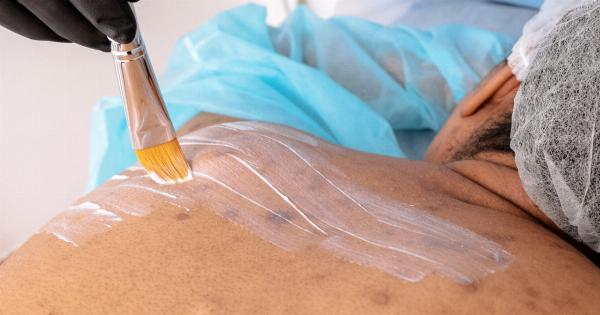Cellulite is a condition that affects the skin and causes it to have a dimpled, lumpy appearance. It is commonly found on the thighs, buttocks, and hips, but can also occur on other areas of the body.
Cellulite is more prevalent in women, but it can also affect men, although to a lesser degree.
Causes of cellulite in men
While cellulite is more commonly associated with women, it can still occur in men. The causes of cellulite in men are similar to those in women, including:.
1. Hormonal factors
Hormonal fluctuations can play a role in the development of cellulite in both men and women. Estrogen, the primary female sex hormone, is known to contribute to the formation of cellulite.
However, men also have a certain amount of estrogen in their bodies, which can lead to the development of cellulite.
2. Genetics
Genetics also play a role in the development of cellulite. If your parents or close family members have cellulite, you may be more prone to developing it as well.
Certain genes can influence how your body stores fat and how your connective tissue is structured, which can contribute to the formation of cellulite.
3. Lifestyle factors
Lifestyle factors such as poor diet, lack of exercise, smoking, and excessive alcohol consumption can increase the likelihood of developing cellulite.
These factors can lead to weight gain, poor circulation, and a weakened lymphatic system, all of which can contribute to cellulite formation.
4. Poor circulation
Cellulite is often associated with poor circulation. In men, poor circulation can be caused by a sedentary lifestyle, smoking, or certain medical conditions.
When blood flow is compromised, it can lead to the accumulation of fluid and toxins, which can contribute to the development of cellulite.
5. Connective tissue structure
The structure of connective tissue in the body can also contribute to the development of cellulite.
Men tend to have thicker and more tightly woven connective tissue compared to women, which makes it less likely for fat deposits to protrude and cause the appearance of cellulite. However, if the connective tissue becomes weakened or damaged, cellulite can still develop.
How can men reduce or prevent cellulite?
While it may not be possible to completely eliminate cellulite, there are steps men can take to reduce its appearance or prevent it from worsening:.
1. Maintain a healthy weight
Being overweight or obese can increase the likelihood of developing cellulite. Maintaining a healthy weight through a balanced diet and regular exercise can help reduce the appearance of cellulite.
2. Stay hydrated
Drinking an adequate amount of water is essential for overall health and can also improve the appearance of the skin. Proper hydration can help flush out toxins and reduce the buildup of fluid that can contribute to cellulite.
3. Engage in regular exercise
Regular exercise can help improve circulation, tone muscles, and reduce overall body fat. Incorporating both cardiovascular exercises and strength training can be beneficial in reducing cellulite.
4. Eat a balanced diet
A healthy diet that is rich in fruits, vegetables, lean proteins, and whole grains can help maintain a healthy weight and improve overall skin health.
Avoiding processed foods, excessive sugar, and saturated fats is also important in reducing cellulite.
5. Quit smoking
Smoking can weaken the connective tissue and impair blood circulation, increasing the likelihood of cellulite formation. Quitting smoking can lead to improved circulation and overall skin health.
6. Massage and topical treatments
Massaging the affected areas can help improve circulation and break down fat deposits. There are also various creams and lotions available on the market that claim to reduce the appearance of cellulite.
While the effectiveness of these treatments may vary, they can provide temporary improvements in the appearance of cellulite.
7. Medical treatments
In more severe cases of cellulite, medical treatments such as laser therapy, radiofrequency treatments, or subcision may be recommended.
These treatments aim to break down fat deposits, stimulate collagen production, and improve the appearance of cellulite.
Conclusion
Cellulite may be more commonly associated with women, but men can also experience this condition.
While the causes and risk factors may be similar, men typically have a lower risk of developing cellulite due to differences in hormone levels and connective tissue structure. By maintaining a healthy lifestyle, including regular exercise, a balanced diet, and proper hydration, men can reduce the appearance of cellulite and prevent its progression. In more severe cases, medical treatments may be an option to consider.
Remember, it’s important to embrace your body and focus on overall health rather than solely the appearance of cellulite.






























